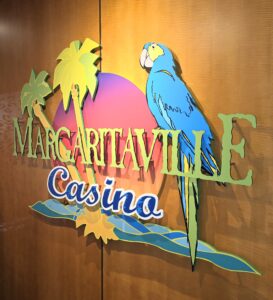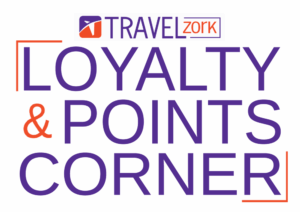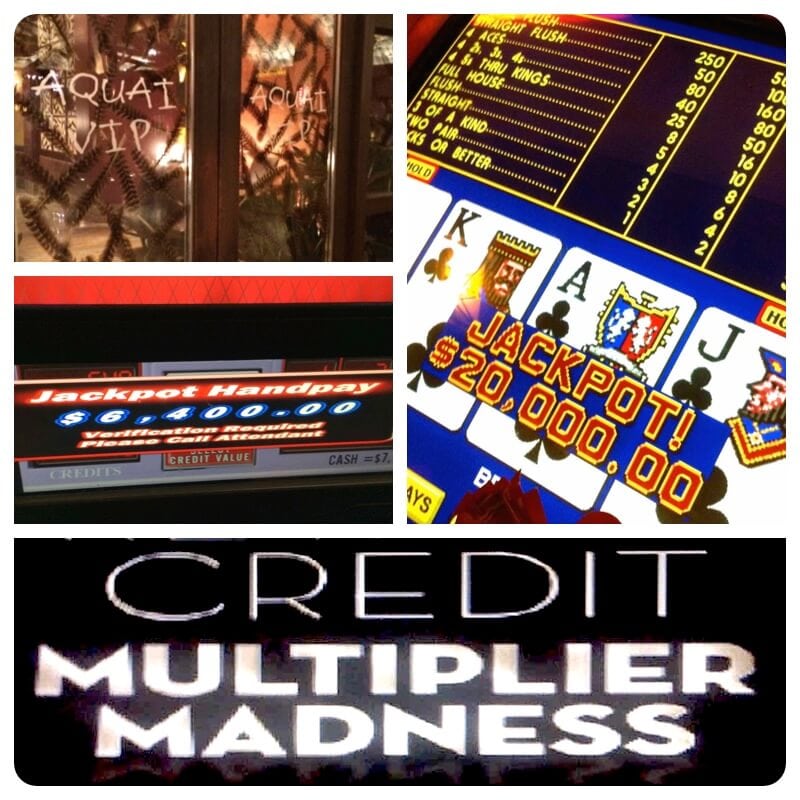Last month I wrote about how casino loyalty cards are similar to the loyalty cards used by hotels and airlines.
This month, I want to discuss how casino loyalty cards are different from hotel and airline loyalty cards. While we will be discussing the differences among the cards, we will cover many of the same subjects as we did when discussing the similarities. Last month, for example, I said that all of these programs have new promotions on a regular basis. This month, I’m going to talk about how you find out what these promotions are in two parts. (Part II and Part III of this series)
1. The biggest difference between casino players’ clubs and hotel/airline loyalty programs is that casinos generally require gambling to earn more points.
This comes with “variance,” meaning you don’t know the final price until later.
In an airline loyalty program, you can find out the price ahead of time for a flight between any two cities, and you can find out the points you’ll earn for taking that flight and for what you’ll be able to redeem those points later.
In casinos, it’s different. A casino might tell you that you earn one point in their club for every dollar you gamble, but you don’t know the results of that gamble until you have finished gambling! Earning 10,000 points in this club may well have you winning or losing $2,000 or more!
Knowledgeable gamblers learn how much each different game returns on average. One form of video poker returns 99.5% before you add in the players’ club benefits. This means that earning 10,000 points (at $1 gambled per point) costs you, on average, $50. (In relatively simple math, 99.5% of $10,000 is $9,950, which is $50 less than $10,000.)
But even though we know how much the game returns on average, we don’t know how much it’s actually going to be this time. This might be the time we hit a $4,000 royal flush and end up way ahead. This might be the time that the machine goes cold and we end up way behind.
If you’re going to end up benefitting from casino players’ clubs, you’re going to have to learn to deal with these swings. You don’t have to like them, but you have to understand that they are part of the game.
Some folks can’t stand to lose. People like this shouldn’t go to casinos because everybody loses in casinos some of the time. And of course if you’re like this, you have no use for a loyalty system that is based on how much you gamble.
2. With airline/hotel loyalty programs, the program is not usually the reason you travel.
You travel for other reasons, generally, and you try to get the best deal you can. With players’ clubs, often the club is THE reason you’re gambling.
Serious intelligent gamblers only gamble when they have the edge over the house. You often cannot get that edge without including the players’ club and whatever promotions are going on.
One of my favorite casinos to play at is the SOUTH POINT HOTEL CASINO AND SPA in Las Vegas. Their players’ club returns 0.30%. If “nothing much” is going on at that casino promotion-wise, I generally won’t play. But if they are offering double points, I may well play $200,000 or more through the machines that day.
(For those of you who are novices at casino gambling, putting $200,000 “through the machines,”—also known as ‘coin-in’—is not at all the same as putting $200,000 of my cash “into the machine.” More on this in a future article.)
The reason for this difference is that their best game for the stakes I like to play returns 99.65%. On single-point days, the 0.30% players’ club makes the game worth “only” 99.95%. You can’t make money long term playing games where the house has the edge! But on double-point days the players’ club is worth 0.60%, so the game is worth 100.25%. Much better! (In actuality, the casino sends me mailers and gives me comps, so by including those benefits, I have a small edge even on regular days. But I want a bigger edge!)
I fully understand that most of the people reading this blog aren’t professional gamblers who can accurately play a game so that the theoretical return on a game is their actual return. Still, everyone should understand that playing when the players’ club at a casino is paying 0.60% is better than when the same club is only paying 0.30%. While I’m in the game for “winning” purposes, if I can help you “lose less,” then I’ve done you a service.
3. The returns from a players’ club are often not precisely quantifiable.
For example, let’s say you earn a drawing ticket for every $200 you play and the drawing is worth $100,000.
If you know there will be 100,000 tickets in the drawing, you can calculate how much the drawing is worth per ticket. (Each ticket is worth $1 on average, and if it costs $200 to earn this ticket, then the promotion is worth one-half of one percent—0.5%. If this math is “too tough” for you, you probably don’t have what it takes to become successful at gambling promotions.) But what if you figured there would be somewhere between 50,000 and 500,000 tickets… maybe even more? That’s a pretty big range and sometimes better information just isn’t available. You need to make some sort of educated guess as to whether playing during this promotion makes sense or not.
Another example is that casinos often send mailers after you play — but they don’t announce what you have to do to earn those mailers. Different casinos take into account such things as what machines you were playing, whether you won or lost, whether you played a lot all in one day or smaller amounts over several days, etc. Sometimes it can be that your mailer in May is determined by how much you played in January, February, and March — but it doesn’t have to be. Sometimes casinos use a six-month rolling average.
You can take the conservative approach and figure the mailers aren’t worth anything until they actually show up, but that robs you of the ability to make intelligent choices. If you know that one casino usually provides mailers worth 0.2% of your coin-in and an otherwise identical casino usually provides mailers worth 0.1%, that could be a factor in where to play.
How do you get this information? Sometimes on websites; sometimes by word of mouth from talking to other players who play similar games and amounts as you do; sometimes from casino employees.
4. On airline/hotel loyalty cards, the goal is to get what you want at the lowest price.
If you can get a $3,000 flight for $500, that’s considered (rightfully) a huge success. If you can get hotel nights in desirable locations for free, that’s basically as good as you can get.
With casino player cards, recreational players think similarly. They get the “fun” of gambling at a much reduced rate.
Successful players think much differently. Our goal is beating the casino. Gambling itself is rather boring. You make the same types of decisions over and over again. Simply playing the game when the house has the edge is of no interest at all to us.
But if we can use the benefits of the players’ clubs so that we have the edge, then it becomes an entirely different ball game. We don’t look at gambling itself as a consumable good (such as a flight or a hotel room), but rather as a means to a profit.
Later this month, I shall wrap up this conversation about how casino cards are different from hotel and airline loyalty cards in Part III of this series.

Bob Dancer is the premier video poker writer and teacher in the world. He has created a number of how-to-win products available at bobdancer.com. He co-hosts a weekly radio show called Gambling with an Edge, which is also archived on his website. (The show is also available on iTunes.)
Bob Dancer is the premier video poker writer and teacher in the world. He has created a number of how-to-win products available at bobdancer.com. He co-hosts a weekly radio show called Gambling with an Edge, which is also archived on his website.












